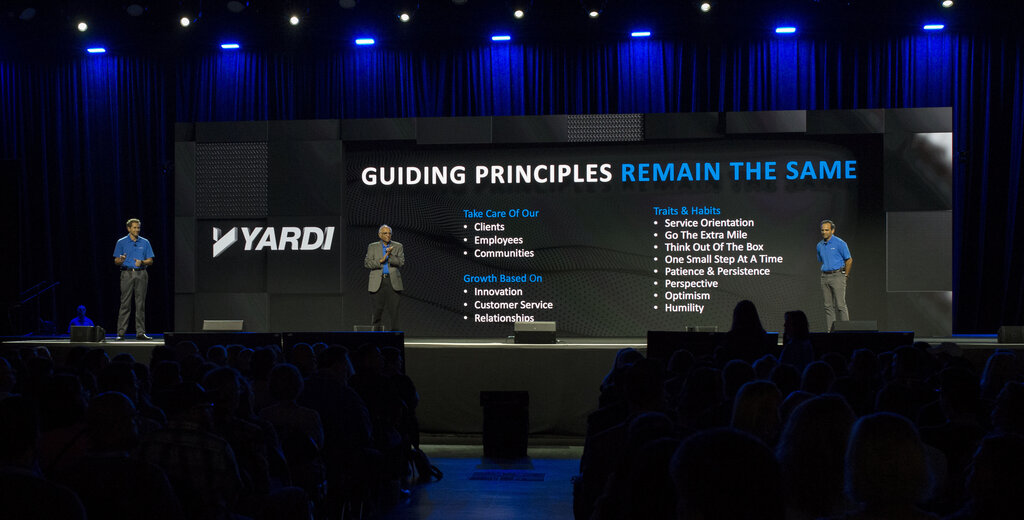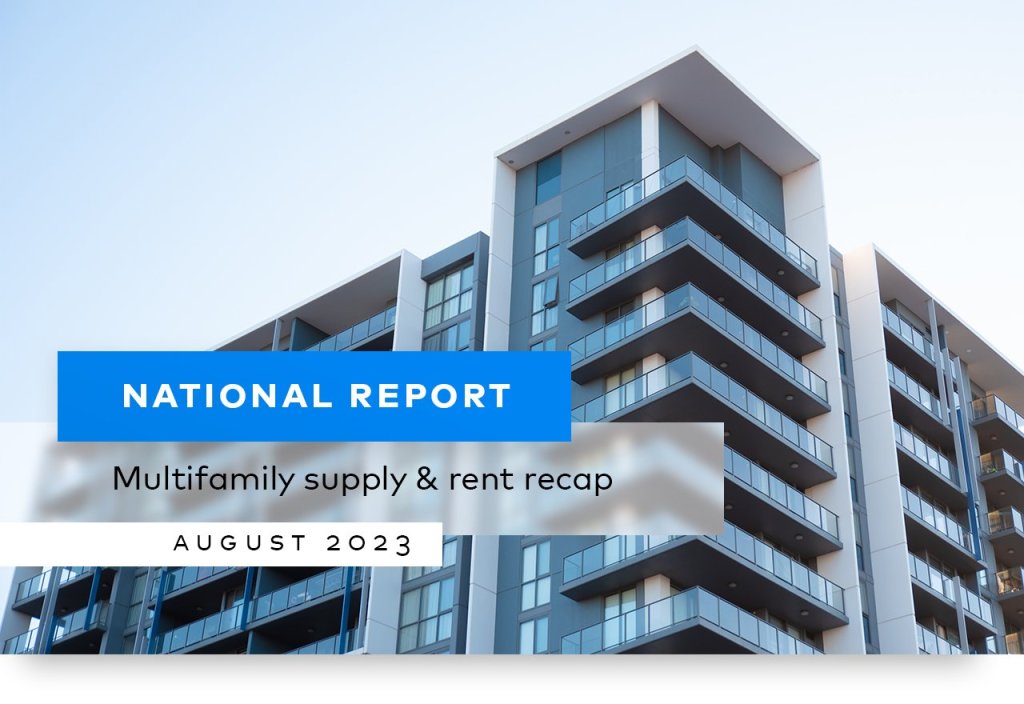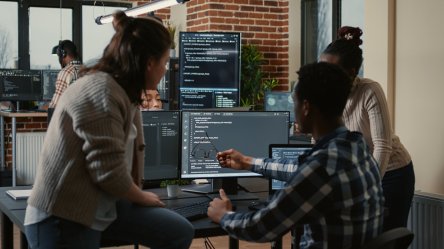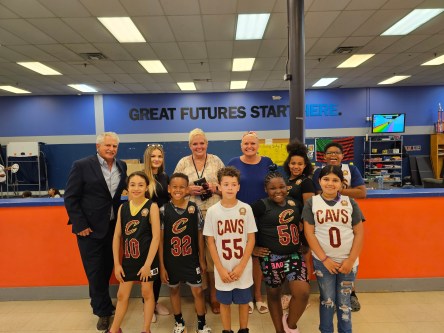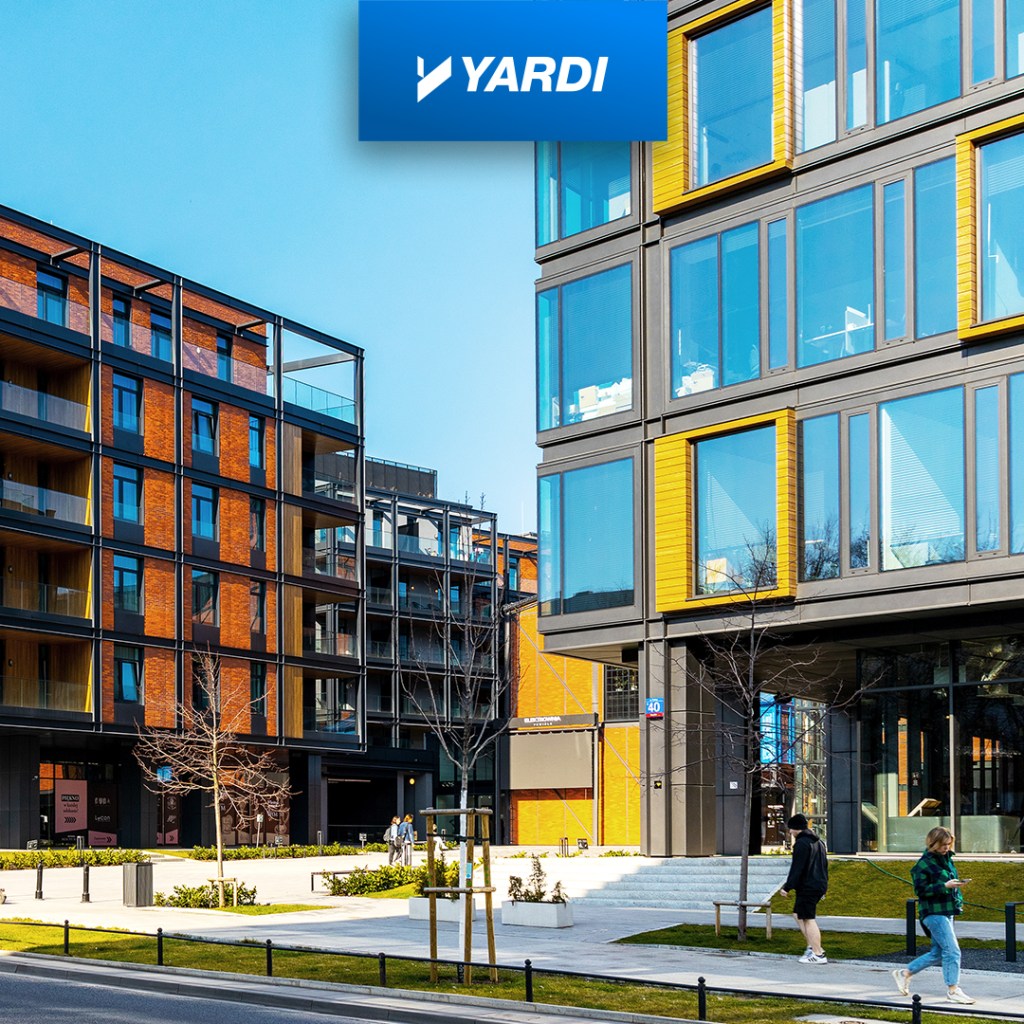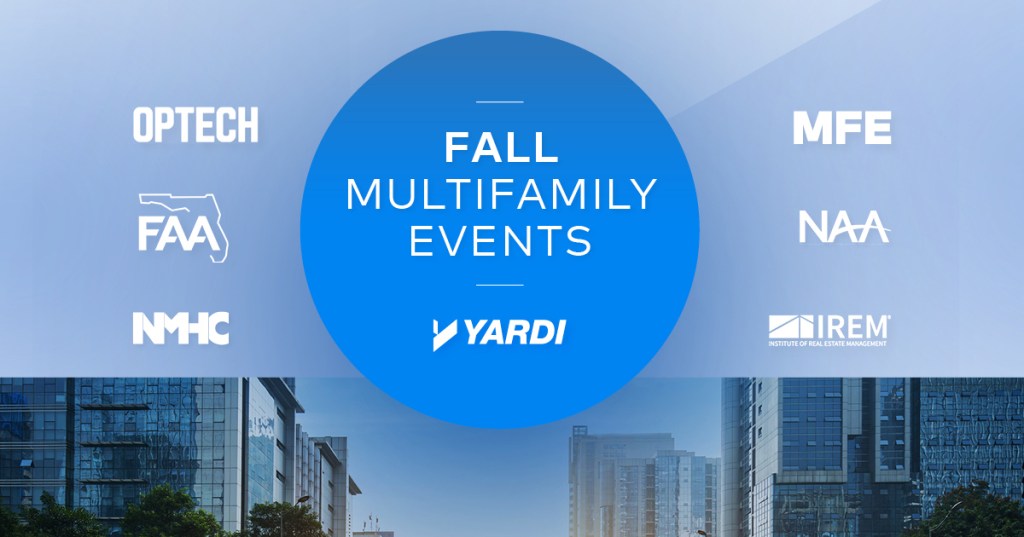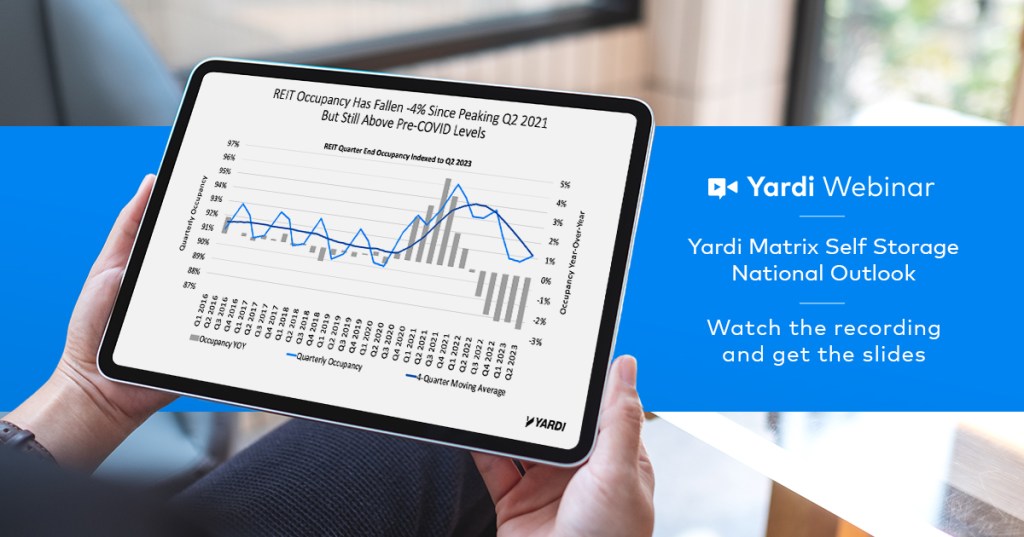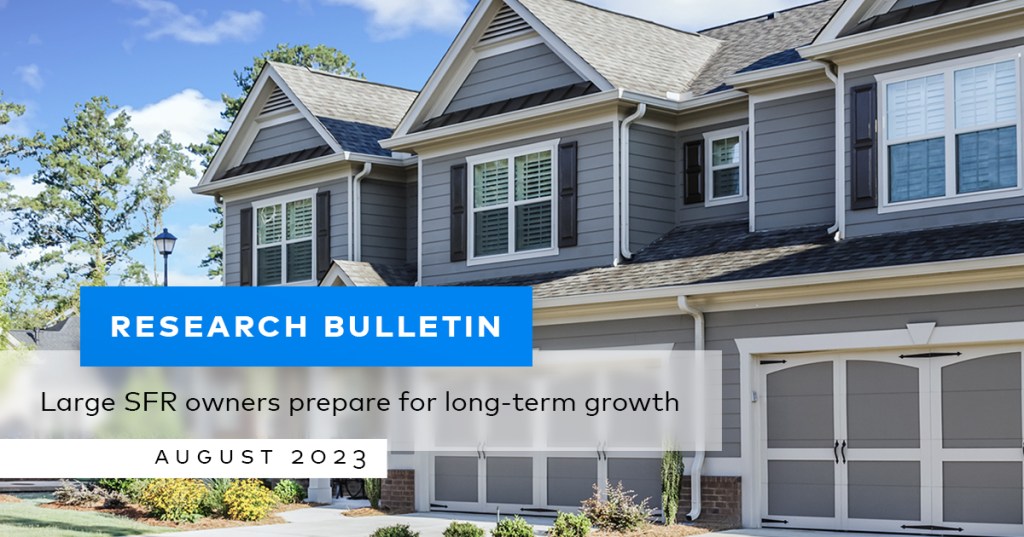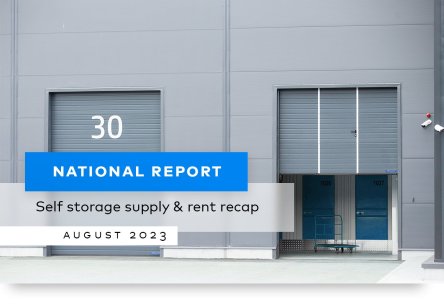Yardi’s Advanced Solutions Conference kicked off Wednesday morning with over 4,000 attendees – making it the largest YASC ever – in attendance at the San Diego Convention Center. “We have 4,000 of the best minds in real estate in San Diego this week,” observed Esther Bonardi, a vice president at Yardi, as a packed room eagerly anticipated remarks from Anant Yardi, the company’s founder and CEO; as well as executives Rob Teel, Akshai Rao and Kevin Yardi. Anant Yardi, founder and CEO of Yardi, speaks at YASC in San Diego on Sept. 6, 2023. Photo credit: Julian Thomas, Yardi staff. The YASC opening session always offers an overview of real estate technology trends and insight into how they might play out within Yardi’s single connected solution for real estate companies. This year brought an especially exciting reveal: Voyager 8 is currently in limited release to clients and will be widely available beginning in January 2024. “The biggest thing with Voyager 8 to get excited about is the user experience. The user interface is completely different. It’s a big leap from Voyager 7S. It’s not a leap in terms of the upgrade process, though,” said Rob Teel, president of global solutions. “We are really excited about the upgrade process. This is going to be an opportunity for you to decide which users you want to start using Voyager 8. They can use 7S or 8, so you don’t have to choose. You can allow your users to get comfortable with Voyager 8 as you start to roll this out,” said Akshai Rao, president of residential. Clients were able to get detailed demos and highlights of the forthcoming release in spotlight sessions unique to their real estate verticals on Wednesday morning. In addition to the new user experience and simple upgrade process, Voyager 8 is built for compatibility with artificial intelligence (AI), promising a continual opportunity for real estate companies to use the new technology for efficiency and smoother operations. AI and real estate AI’s implications for business functions like marketing are evident across industries, but what about specific uses for real estate? That question was at the heart of Anant Yardi’s remarks on Wednesday morning. Noting that Yardi is fully committed to making use of AI in the most constructive and beneficial ways possible, Mr. Yardi said that he sees the incorporation of the technology as a gradual one. “The future of AI in real estate is not going to be some big bang type of change, that’s not going to happen,” Mr. Yardi said. He noted that Yardi has already made infrastructure investments that will provide processing bandwidth required for AI systems. Teel and Rao provided a look at Yardi products where AI is already incorporated and will have a growing role moving forward. They include chatbots, which already provide automated answers to prospect questions from multifamily clients; maintenance requests, which could be assigned prioritization and dispatch by AI; and a virtual Voyager assistant who will answer software questions, thanks to AI. “We are fully committed to this change and look at this as an opportunity to grow,” Mr. Yardi said. “Anytime there’s an opportunity to embrace and acknowledge change, I think lurking behind it, you’ll see an opportunity for growth.” Spotlight on corporate philanthropy The general session concluded with a look at Yardi’s corporate focus on philanthropy, which has been a longtime priority for the company. “Our guiding principles over the last 40 years and for the next 40 years are to take care of our clients, employees and communities, and candidly, we don’t often talk about what it means to take care of our communities, so I wanted to take this opportunity to spend a few minutes on it,” said Kevin Yardi, vice president. “We provide funding to our 40 offices around the world and our 9,000 employees help guide funding to nonprofits that are meaningful to...
Multifamily Rent Update
From Yardi Matrix
Multifamily performance was stable in August, according to the latest Yardi Matrix National Multifamily Report. The average U.S. asking rent rose $1 to $1,728, while year-over-year growth fell to 1.5 percent, down 20 basis points from July. Occupancy was also effectively flat. “Economic growth continues to be stronger than expected, providing a backdrop to consistent multifamily demand. U.S. asking rents rose slightly in August, while occupancy rates remained strong at 95 percent,” states the report. These trends and much more will be discussed Sept. 20 in a multifamily-focused webinar with Matrix experts Jeff Adler and Paul Fiorilla. Sign up here to join live or receive the post-event recording. In the short term, supply remains a driving factor in rent growth. Most metros with the highest year-over-year asking rent growth, such as New York, Chicago, Indianapolis and San Diego, have weak new development pipelines. Single-family rents dropped back in August, down $6 nationally to $2,104. Year-over-year, national SFR rent growth fell 70 basis points to 0.5 percent. According to the report, some 190,000 multifamily units have been absorbed in the U.S. through July. That figure is below the record-setting year of almost 600,000 in 2021 but is otherwise a healthy pace. Among the top 30 Matrix metros, absorption in absolute numbers in 2023 has been led by Washington D.C., Phoenix, Miami, Chicago and Denver. As a percentage of stock, Charlotte, Tampa and Nashville are among the metros that have performed the best so far in 2023. Gain more insight in the new Yardi Matrix National Multifamily Report. Yardi Matrix offers the industry’s most comprehensive market intelligence tool for investment professionals, equity investors, lenders and property managers who underwrite and manage investments in commercial real estate. Yardi Matrix covers multifamily, student housing, industrial, office and self storage property types. Email [email protected], call (480) 663-1149 or visit yardimatrix.com to learn...
CRE Diversity
Inspiring Voices
Realcomm’s August two-part webinar series, Celebrating Women and the Diverse Voices in CRE, highlighted the talent, thought leadership and unique mindsets that have enhanced commercial and corporate real estate as more women, minorities and diverse thinkers fill executive leadership positions and advanced technology roles as well as facilitate key vendor partnerships. Insights on career paths and navigating challenges In session one, Leadership, Diversity & Evolving Company Cultures, the executive-level women panelists talked about how workplace culture reflects the values of company leadership and can shape employee interactions as well as promote motivation and loyalty. With new voices in the leadership space, the panel discussed changes in leadership modeling, evolving workplace challenges, the critical role that mentorship plays and how companies are attracting new talent. A big theme among the panelists’ stories of their personal journeys was about receiving mentorship and support and becoming a mentor themselves to help other people advance and open up opportunities. Further, working with good leaders taught them how to become good leaders. Another common theme was about advocating for yourself. Hope Dunleavy, enterprise managing consultant at RealFoundations, stressed the importance of reaching out, being authentic and sharing your story while also listening to others’ stories. The panel agreed on the importance of creating community for support — such as joining (or creating) a women’s group in your organization, which Kelly Soljacich, senior vice president of LaSalle Investment Management, recommended. Veronica Unnikrishnan, partner and senior vice president of innovation, sales and marketing at 5Q Partners, commented that choosing the right organization and positions that will lift you up “is where the magic happens” and will help you grow and develop your career. Further advice included choosing the best opportunity over the most money is a wise decision in the long...
Drive Engagement
With Training That Sticks
One of the most popular classes at this week’s Yardi Advanced Solutions Conference – and past events – focuses on mastering the art of creating and delivering transformative training programs. Taught by Yardi Aspire team members Patty Evans, industry principal, and Michael Joiner, senior manager for client service and content, the class demonstrates how to use software to create experiential learning exercises that stick with employees long after the training is completed. The attraction of ‘experiential learning’ This concept can be summarized as “learning by doing.” It encompasses such interactive experiences as games, point-based rewards, focus group discussions and group projects. “By engaging students in hands-on experiences, application, and reflection, they are better able to connect theories and knowledge to real-world situations, including those that impact property management success,” Evans says. Effective experiential learning assignments include simulated software skills practice sessions, video demonstration assignments, chat-based role play, scenario-based group problem-solving, and stretch exercises that challenge employees to identify and solve a real-world issue facing the organization. A study by PwC showed that employees who participate in scenario-based simulations retain 75% more information than those in traditional training methods. Additional research by LinkedIn found that 68% of employees prefer to learn through collaborative and social methods, highlighting the value of peer interaction. “By aligning with the way adults learn, experiential learning maximizes knowledge retention and skill development,” Joiner says. Linking motivation and engagement Before thinking about engagement, consider some of the principal causes of learner disengagement from a curriculum: How does that relate to engagement? Motivation, which manifests as the sense of satisfaction or reward gained from accomplishment, is the driving force that prompts a learner to take action, while engagement is the observable behavior produced by the motivation. In employee training, one of the...
Haven Family Connections...
Haven Kids' House
Yardi is committed to supporting the community in every city where our offices are housed. Each year, the company distributes philanthropic aid to organizations selected by its employees. In 2022, Yardi offices supported more than 350 nonprofits worldwide. We are pleased to bring you the stories of those organizations and insight into how they aid their communities. Today, we travel north to Saskatoon, Canada and introduce Haven Family Connections (Haven Kids’ House), founded in 1976. This non-profit focuses on helping at-risk families be successful through proactive breaks and interventions to prevent issues. “We know that kids do best when their families are healthy, and we work towards that goal,” says Dionne Miazdyck-Shield, executive director for Haven Family Connections. Haven Family Connections fundraises for Haven Kids’ House, an emergency home for kids aged 0-12, opened 24-7, 365 days a year, with a 24-hour crisis line for families to call when they need respite or support. Sometimes, parents are in a very dark place involved with violence, no food or homelessness, and they need time to make decisions and find resources. “When families call us, we know they are out of options. Haven Kids’ House is a place of caring and safety for kids in Saskatoon so that kids can be kids, and parents can be successful,” said Miazdyck-Shield. In their work with Haven Kids’ House, they help families access internal resources and other supports they need to do the best for their kids. Many families are overcoming a history of disadvantages, poverty, trauma and violence. “We honour their experience and voice as we work and walk beside them. We see how hard they work for their kids, and we feel lucky to be compassionate allies with them,” Miazdyck-Shield shares. Other programs include the Indigenous Family...
Tamm Sharper
Yardi Employee Profile
Yardi staff make essential contributions to property management clients worldwide. Today, meet Tamm Sharper, a Voyager Client Success residential TX 2 team consultant for special projects in the Dallas office. Meet Tamm Sharper Tamm Sharper has been working for Yardi since December 2014. Sharper works on projects from the Voyager Client Success and RentCafe Client Success Texas teams for existing clients. From complex and sometimes expedited implementations to At-risk client specialty projects, she has a variety of opportunities to build relationships with clients during their Yardi journey. She works with clients to analyze pain points and devise a course of action, whether goal-based or time-specific, to alleviate the issues they experience daily. Sharper conducts on-site training sessions and business process reviews to optimize Voyager/CRM to give the client the most value. She also mentors colleagues and newer Yardi employees going through the N.E.S.T program by showcasing the culture of Yardi, conducting trainings and assisting with cases. Strategizing Stellar Results Sharper says, “I like to call myself ‘the fixer!’” Sharper enjoys having a client come to her at their breaking point and her being able to strategize and develop a plan to get them back on track. At the project’s close, she feels there’s nothing more satisfying than having a client smile and express gratitude for all the hard work they’ve accomplished. “There’s just something special about reviewing all the objectives we set out to accomplish and getting that confirmation of satisfaction from the client! Also, it’s heartwarming to know that I’ve made a difference in client retention when we see the numbers during corporate updates,” shares Sharper. Sharper appreciates Yardi’s transparency since the early days of the pandemic and that Yardi is always there to contribute when help is needed. “It’s amazing to hear...
Boys and Girls Club
Of Northeast Ohio
Let’s journey to the Midwest and introduce you to the Boys and Girls Club of Northeast Ohio (BGCNEO), founded in 2019, creating the nation’s largest Boys and Girls Club. The club provides a safe and fun place for kids ages six-18 to go after school, focusing on academic success, healthy lifestyles and leadership. There is no charge to join. Kids can come after school when parents are typically still at work, giving them peace of mind knowing their children are in good hands. A typical day at BGCNEO starts with “power hour,” which includes getting help with homework followed up with recreation, arts, music and a free meal. BGCNEO plans to double the number of kids by 2025 and hopes to deepen the impact of programs and strengthen connections to club neighborhoods. Funding from Yardi helps provide world-class programs for kids and expands its reach across Northeast Ohio. The support allows kids to experience various opportunities, from music performances to career-readiness programming. “We are extremely grateful for this support. Yardi has been supporting our Clubs for a decade now. We couldn’t do our work if it weren’t for our amazing partners and corporate supporters like Yardi,” says Ken Wood, director of communications for BGCNEO. On behalf of the Yardi Cleveland charity committee, Suzy Scherer, senior technology manager for revenue IQ, speaks about BGCNEO, “Knowing these kids get a place to be kids and have an activity/learning-based center that promotes positive change is so amazing!” Boys & Girls Clubs are suitable investments. A University of Michigan study found that for every dollar invested in a Club, $9.60 in benefits are returned to the community. “In a Harris alumni survey, 54% of the respondents said the club ‘saved my life,’” Wood said. Richard Starr’s Story Richard...
Making It Real
Can Holograms Enhance Work?
Holographic technology – once the stuff of science fiction, enabled with Nobel Prize-winning innovation, increasingly used in fields ranging from education and military planning to medicine and entertainment – is receiving attention as a potentially transformative workplace technology. Holograms are produced by an imaging process in which lasers capture and replicate objects into detailed three-dimensional projections of diffracted light that preserve the depth of the original physical source it displays. It is, one observer says, “the intersection of light and matter, designed to be observed from all perspectives.” The current state of the art comprises two laser beams collaborating to create solid light holographs in 10 billion pixels per square meter in ultra high definition. Hungarian-British physicist Dennis Gabor pioneered holographic technology, winning a Nobel Prize in Physics in 1971. Providing a ‘magic window’ Holographic technology “works like a magic window, where users can talk, gesture and make eye contact with another person, life-size and in three dimensions,” says Andrew Nartker, director of product management at Google, whose Project Starline aims to create 3D projections that give workers to appearance of speaking to each other across a window. Star Wars aficionados may have been introduced to holograms with Princess Leia’s distress call in the movie franchise’s first installment in 1977. An ABBA “reunion” in 2022 featured the band’s members projected as holograms. (Certain other concert projections of music legends reflected 2D images off a semi-transparent surface in an effect known as Pepper’s Ghost. Lacking depth and volume, they weren’t true holograms, contrary to popular belief.) Expanding business applications And now, this technology is providing new resources for the business world. For example, holograms can give retail shoppers 360-degree views of items. Models created with holograms help military decision-making by offering detailed visual assessments of...
Mixed-Use Success
Main Attractions
Already big in the retail sector, mixed-use projects have become increasingly popular for office developers. Mixed-use developments can deliver accelerated lease-up periods as well as command higher rents compared with standalone properties in the same market. And that’s not all. As some commercial property sectors, most notably office buildings and retail properties, continue to face challenges post-pandemic, investors are more and more attracted to mixed-use projects. Market experts say that the experience economy’s influence on the workplace is a key to retaining talent. It’s a trend that forward-thinking office owners and developers are cashing in on by integrating office space into mixed-use environments. Read on to learn more about key attractions of mixed-use, including what investors are looking for. New development drivers In a May 2022 article on wealthmanagement.com, Nihar Shah, vice president of development at Perseus TDC, an affiliate of Transwestern Development Company, spoke about what’s driving new mixed-use projects. According to Shah, “There are several drivers underpinning a boom in mixed-use projects. One of the main ones is the interconnectivity of uses within a larger master plan. Infill locations work in areas that have amenities already in place, but mixed-use developments create a new built environment in areas that were previously not developed or were underutilized…The new uses usually become a win-win for both investors and cities as they create more housing, retail and tax revenue. But in densely populated areas, a location near public transit is often critical to a mixed-use projects’ success.” Higher average office rents Research shows that office rents at mixed-use developments lease up faster and tend to be an average 24.7 percent higher than those in the surrounding submarket. Not surprisingly, large mixed-use projects are under development across the country and many have already broken ground. From...
Brody Masterson
Yardi Employee Profile
Yardi’s offices have many internship opportunities for those interested in learning about the technology side of real estate. Today, meet Brody Masterson, who joined the company for an internship five years ago and has been thriving at Yardi since. Brody and his wife, Ashton. Meet Brody Masterson Brody Masterson completed an internship in the summer of 2018 with Yardi. He completed his degree from the University of Oklahoma and graduated with a bachelor’s in management information systems. He then started working at Yardi full-time out of the Dallas office, making last month his fourth anniversary. Masterson is a senior technical manager for the residential Texas Practice 6 Team. Masterson spends most of his work resolving data issues for clients he is solely responsible for. When he is not working and meeting with clients, he works with his colleagues and team members needing assistance. Since stepping into the senior role with more responsibility, he has taken over critical topics for his team. “I’m readily available to answer any questions that my teammates have, or if they prefer, I’ll hop on a quick call with them to give them guidance on a case or insight over a Voyager functionality,” said Masterson. Yardi is a comprehensive software that takes time to learn the ins and outs. However, Masterson enjoys using not only his technical skills but also his consulting skills for the job. “There are numerous software areas that require either cloud knowledge, accounting knowledge, marketing knowledge, etc. So, it has been very beneficial learning from all these different areas,” said Masterson. Knowledge is Power Masterson likes the comradery and collaboration at Yardi. Even working virtually, he still feels the same vibes from working daily in the office. “Yardi’s culture is also very collaborative. There has always...
2023 Fall Multifamily Events
Discover + Connect
Planning to attend multifamily events this fall and winter? Chances are we’ll be there! This is a great opportunity to strengthen your industry connections and see how a connected system benefits every stage of your workflow. Explore this list to see how you can connect with us at every event. September: Multifamily Executive Conference Mark your calendars for the Multifamily Executive Conference from Sept. 26-28 in Dallas, Texas. This three-day event is a great way to get insights on how to sustain your organization’s success. Learn how to map out your next moves, collaborate with key industry players, advance business strategies and much more. Yardi is proud to be a Platinum Co-Sponsor for this event. Meet with us at booth 210 to make the most out of your time! We’re excited to show you how you can improve your workflows with connected solutions. September: NAA Cultivate Join us in an all-new event: Cultivate, Powered by NAA! Set to take place in beautiful Tucson, Arizona, Sept. 27-28, this retreat-style event is tailored to executives looking to deepen their networking and leadership skills. We are proud to be the NAA Strategic Partner and the General Session Sponsor for this event. Book a meeting with us in advance! With sessions and speakers designed to encourage, motivate and enable reflection, this event is a can’t miss for multifamily executives looking to enhance their people management and leadership strategy. October: IREM Global Summit This year’s IREM Global Summit will be held in Toronto, Canada, Oct. 9-12. As a proud IREM Industry Partner, we can’t wait to show you solutions to help you increase your NOI and drive efficiency. Join Yardi Aspire Industry Principal Patty Evans on October 12, where you can learn how to futureproof your workforce with a futuristic elearning strategy. We’re also proud to sponsor the IREM Gala and Afterparty. Join us as we celebrate IREM members and their accomplishments with a cocktail reception, dinner, drinks and awards. And don’t forget about the Afterparty, where you can wrap up a spectacular week with a fun dance floor. We’ll be happy to see you at booth 1 and 2, but feel free to book time with us in advance. October: Florida Apartment Association Conference & Tradeshow And who could forget about the Florida Apartment Association Annual Conference & Tradeshow happening Oct. 11-13? With numerous speakers and informative sessions to choose from, you can truly customize your time to your learning and networking goals. Yardi is proud to be a platinum sponsor for this event. Schedule time at booth 701 to connect with our team! October: NMHC Student Housing Conference Join us for the NMHC Student Housing Conference in Las Vegas, Nevada, Oct. 17-19. Gather and get inspired with other leaders as you learn and make connections that will shape the future of the industry. Plus, don’t miss Yardi Vice President Jeff Adler on the student housing market economic outlook panel. We are happy to be the Chair Circle Sponsor for this event. See us there at kiosk 3 — or book time with us in advance! November: NMHC OPTECH Conference & Expo Who says you can’t go to Vegas twice in one year? Also in Las Vegas, Nevada: the NMHC OPTECH Conference and Expo from Nov. 1-3. Join us and other leading voices in multifamily as we touch on the most important conversations around the future of multifamily tech and operations. We are pleased to sponsor the registration for this event. We’ll have more information as the event gets closer, but you can always book a meeting with us ahead of time. We can’t wait to see you in person! Curious to see where else we’ll be throughout the year? Check out our full list of events. If you’re interested in learning more about how our connected solutions can help your multifamily company improve NOI across your portfolio, let us know how...
Property Management Jobs
Opportunity Knocks for New Grads
Recent college graduates are now looking for entry-level jobs post-college after enjoying a well-deserved summer break. Here are some tips on navigating the job search for the property management industry. Understanding the current property management job market is vital for job seekers. Those looking to be property managers need to understand that factors like population growth, urbanization and shifts in housing preferences influence demand. Different property management roles include residential, commercial and community association management. Skills that employers seek for entry-level property management candidates include communication, organization, problem-solving and customer service skills. Networking and internships are vital to establish connections and gain practical experience in the industry. An effective property management resume is essential to stand out to potential employers. Make the resume customized. Tailoring the resume to each job application is necessary, aligning the content with the specific job requirements. Include relevant sections like objectives, skills, education, experience and achievements. Quantify the achievements by demonstrating impact. For example, “managed a portfolio of X properties” or “increased resident satisfaction by y%.” Highlight skills such as lease administration, maintenance coordination and software proficiency, especially with property management tools and CRM software. Online courses and certification for property management can enhance a candidate’s qualifications and knowledge. Look into certifications offered by the National Apartment Association Education Institute (NAAEI), such as Certified Apartment Manager (CAM) and Certified Apartment Maintenance Technician (CAMT). The Institute of Real Estate Management (IREM) courses and certifications, such as Certified Property Manager (CPM), provide in-depth knowledge of property management practices. LinkedIn Learning has many relevant courses that cover property management principles, real estate law and related skills. Speaking of online, an online presence can significantly enhance an applicant’s visibility in the job market. LinkedIn optimization will create a professional LinkedIn profile highlighting skills, experiences and aspirations in property management. Encourage connections with professionals in the industry. Create a personal website that showcases resumes, portfolios, blog posts and relevant projects and hobbies. Build an online portfolio showcasing achievements, property management projects and any other published content related to the field. This can help set you apart from other candidates. Be sure to clean up anything employers would frown upon, such as pictures from the latest Coachella festival or playing beer pong with friends at parties. As the field evolves, staying informed about industry trends is crucial in property management. Read up on industry publications and reputable magazines and websites like Multifamily Executive, National Apartment Association (NAA) and Yardi Matrix, which regularly publish articles and reports on property management. Read up or listen to industry-specific blogs and podcasts that cover topics ranging from technology advancements to property investment strategies. Look into upcoming webinars and conferences that property management professionals can attend to learn about the latest trends and network with others in the field. Networking goes a long way. Keep business cards from conferences to refer to when applying for jobs. In today’s world, it is all about who you know to get ahead or that inside connection. We hope this provides valuable insights and actionable advice that will help you succeed in securing entry-level jobs in property...
Weak Demand Hurts Self Storage
Yardi Matrix webinar recap
Self storage performance slumped in the second quarter of 2023, typically the strongest quarter, due to weak demand. That was among the top takeaways from a Thursday webinar hosted by industry leading data provider Yardi Matrix. You can view the webinar recording and presentation materials here. Among other key takeaways for the sector: Street rate growth continues to decelerate, as same store rates were down -4.6 percent in July One bright spot: operators were able to grow revenue by increasing existing customer rents (ECRI) The amount of new supply under construction Is moderating and likely won’t return to normal until 2025-2027 Investment activity is drastically reduced, with two notable exceptions (read on for details) “We’re in a kind of a 2017-2019 kind of world, where revenue growth is really off the back of ECRIs versus street rents,” said Jeff Adler, vice president of Yardi Matrix, during the webinar. Reasons that demand has dropped included the challenging single family real estate market, with interest rates for new purchases around 7 percent, and diminished mobility of American households post-pandemic. “Lower street rates are a result of weak move-in activity, with average REIT occupancy in Q2 2023 down 400 basis points from its all-time peak in Q2 2021,” states the latest self storage report. In July, overall national street rates (all unit sizes and types combined) dropped $1 to $141, down 0.7 percent month-over-month. Historically, rate growth is positive in July, averaging a sequential increase of 0.8 percent in the past seven years. While an anticipated recession has yet to fully materialize, Adler still expects that one will be in place by the end of the year, due to a lag time between Federal Reserve actions and the ultimate impact on the real economy. “We’re still in this period of time where you’re seeing strong economic growth, but we are seeing the beginning of the signs of a slowing trend,” Adler said. Self storage demand has historically been resilient, coming from a variety of sources, and growth rebounds quickly following a downturn due to month-to-month lease terms and flexible customer rate increase programs. But investor increased in the sector has also taken a hit in 2023, with two notable exceptions. Extra Space merged with competitor Life Storage in July. The combined company is now the largest storage operator in the country (based on the number of self-storage locations) with over 3,500 locations, approximately 270 million square feet of rentable storage space, and more than two million customers. Public Storage also announced last month that it has entered an agreement to acquire Simply Self Storage for $2.2 billion. According to the announcement: “The portfolio comprises 127 wholly-owned properties and 9 million net rentable square feet that are geographically diversified across 18 states and located in markets with population growth that has been approximately double the national average since 2018.” Aside from those significant moves, sales and M&A activity have plummeted, said Tyson Huebner, director of institutional research for Yardi Matrix. “It should be no surprise that transaction volume thus far this year has really fallen off the cliff. The number of properties sold in the first half of 2023, which doesn’t include those two portfolios, was down 56.6% from the first half of 2022,” Huebner said. Gain additional insights on self storage and the economy by checking out the entire...
Get Your Swag On
Build Brand Identity
Swag, a word coined in the 1940s by an advertising executive, is a way for a business to reinforce its brand among clients, prospects and employees. Swag encompasses a vast array of complimentary items ranging from pens, mugs and mouse pads to hats, water bottles, backpacks, specialized bags for carrying tech gear, exercise mats, calendars, magnets, coasters and much more. “Companies give out swag because it helps them create positive associations with their brands, increase employee morale, provide incentives to generate more business and encourage repeat purchases,” says Nectar, a provider of software used for employee recognition, retention and engagement. “Branded merchandise makes clients and employees feel like part of a team,” adds Goody, a platform for personal and business gifts. Data collected by the promotional products industry reveals the power of swag. For example, 72% of consumers believe the quality of promotional items reflects a company’s reputation. Fifty-three percent of swag recipients use a promotional product at least once a week, 60% will look up the brand online and 72% say the quality of a promotional item impacts their perception of the brand. Furthermore, 59% of employees who receive their company’s swag report a more favorable subsequent impression of their workplace. Tips for success Marketing platform P2P and online comparison platform top10.com offer tips for using promotional giveaways to your greatest advantage: * Make sure your items are durable, attractive, relevant to your business, employees and customers, and clearly branded. Carefully evaluate how the products and their branding will reflect your mission and identity. * Emphasize practical items like pens, mugs, USB drives, mobile phone covers. Not only are they regularly used, they may be shared beyond the original recipient and further expand your brand awareness. * Buy in bulk to gain economies...
OneGoal
Serving Metro Atlanta
Yardi is committed to supporting the community in every city where our offices are housed. Each year, the company distributes philanthropic aid to organizations selected by its employees. Introducing OneGoal Metro Atlanta, a nonprofit organization founded in 2016 with its headquarters in Chicago, founded in 2007. OneGoal transforms post-secondary advising and support so that every student can define their future. Alongside OneGoal’s partners, they are building a movement to close the opportunity gap. OneGoal Metro Atlanta works with regional partner schools to develop their knowledge and capacity resulting in more equitable and practical support for all students. Over the years, OneGoal has delivered real student impact. An independent study by the University of Chicago found that OneGoal students are about 40 percent more likely to earn their postsecondary degrees than students of similar backgrounds. In 2021, new data from the National Student Clearinghouse found that the national six-year college completion rate reached 62 percent. “Compared to their white peers, students identifying as Black or LatinX experienced an 18-25 percentage point college completion gap. This is not for lack of ambition or talent but for lack of opportunity and support,” said Tiffany Scott, senior director of development at OneGoal Metro Atlanta. These declines come just as postsecondary degrees or credentials are increasingly necessary for improving economic mobility. Unfortunately, Metro Atlanta youth are not immune to this national crisis and require an intervention that makes postsecondary degree attainment accessible for all. “Over the few years of our strategic plan, OneGoal-Metro Atlanta will focus on closing the gaps in degree attainment by delivering a solution that meets the diverse needs of Metro Atlanta students,” says Scott. She continues, “Our goal is to improve degree attainment for 2,000 OneGoal students by 2025. Our work over the next year...
Ready for Success?
See the Yardi Investment Suite
Why are many leading real estate investment managers increasingly turning to the Yardi Investment Suite? Because this end-to-end solution delivers: Efficiency through automation. Automation reduces double entry from timesheets and disparate data systems. It also enables investors to access reports and forms wherever and whenever they want. Automation factors into increasing portfolio size without adding staff. Yardi Investment Manager, an element of the suite, automates subscription agreements through e-signature, capital calls and distributions. “The Investment Suite makes life easier for our real estate investment team, and thus our clients, by eliminating the need to integrate and validate data from multiple sources,” says Joe Biddle, director of IT for Baltimore-based real estate investment manager ABR Capital Partners. Another example of efficiency comes from Holladay Properties. The full-service commercial real estate firm in South Bend, Ind., saw a five-fold increase in its investor base in five years. Keeping pace with that growth required greater efficiency in every area of the company’s business – which the Yardi Investment Suite enabled. “We not only succeeded in satisfying all client expectations. And we did it without needing additional staff,” notes Wills Gardner, Holladay’s director of capital planning. Success through centralization. Centralizing all communication, transactions and opportunities on the Yardi Investment Suite platform also serves to simplify the investment lifecycle. “We use Yardi Investment Manager to call capital, make distributions through waterfall promote structures and eliminate manual tracking of capital activity,” says Scott McGinness, CFO, of Cohen Asset Management Inc., a Los Angeles-based private real estate investment company. McGinness continued: “Our staff doesn’t have to spend time assembling information from disparate sources, then preparing and distributing it. They can direct their energies to more productive activities such as researching investment opportunities and strengthening client relationships.” All information, when investors want...
Single-Family Rental Market
In Growth Mode
Although its pandemic-driven expansion has been tempered recently by rising mortgage rates and cooling home sales, the U.S. institutional single-family rentals (SFR) industry has entered a moderate growth mode that positions it “to thrive over the long term,” according to a new research bulletin from Yardi Matrix. Robust household family formation and elevated demand for family and home office space during the pandemic sparked a run-up of SFR rents, which increased by 27.9% from January 2020 to mid-year 2023. Occupancy rates have remained above 95% since January 2018. But rent increases slowed and year-over-year rent growth decelerated in the first half of 2023. The Federal Reserve has increased short-term interest rates by 525 points since spring 2022 and institutional SFR acquisitions have declined after two years of record volume. Despite this, “demand for single-family rentals is almost certain to remain firm,” with the sector having “solidified its presence as a niche segment of the overall commercial real estate market,” the bulletin says. The extent of the sector’s growth will depend on how well owners and investors succeed in financing acquisitions and developing efficient property management strategies. Nashville, Tenn., had the strongest year-over-year SFR rent growth at mid-year, followed by Baltimore and Chicago. The weakest metros for rent growth were Orlando, Fla., Miami and California’s Inland Empire. There’s much more insight into the SFR market in the August 2023 Yardi Matrix Bulletin, including an examination of fundamental drivers, a discussion of proposed legislation regarding institutional SFR purchases, a review of acquisition growth trends and reports on regional stock deliveries. Download your...
Leeana Bari
Yardi Employee Profile
Yardi’s global offices make essential contributions to property management and investors worldwide. Today, we introduce you to Leeana Bari, a senior technical account manager for RentCafé Resource out of the Dallas office, a part of the Texas Practice 6 team. Meet Leeana Bari Leeana Bari has been with Yardi for five years after graduating from the University of Oklahoma, her first job out of college. Bari spends her workdays keeping clients as happy as possible. Fulfilling the Yardi mission statement, taking care of clients and being dedicated to them, ensuring they are all responded to promptly. She also values positive reinforcement for her peers and colleagues. “I am a queue watcher because I love seeing the queue go down and sending a ‘good job team’ message from time to time in our team chat to shine a light on their hard work being seen because some weeks it gets tough,” says Bari. Working in the office has allowed Bari more human interactions since the pandemic made everything virtual. She enjoys walking around, joining conversations, and playing ping pong in the breakroom. She finds working from home can lead to burnout with minimal breaks, so when working at home, she is mindful of her time and does a quick 10–15-minute workout to get the blood flowing. “I believe it’s important to incorporate times to step away from the computer to refresh your mind, especially if you’re stuck on a case,” Bari shares. Cultivating Bonds Bari appreciates all the people she works with at Yardi. She has never felt that she couldn’t be herself, which makes the work environment enjoyable. The professionalism and involvement of managers and team leads in the Dallas office encourage success and growth within Yardi. “The environment is professional, but one thing I absolutely love about Yardi is that I always felt and continue to feel like I can be myself in and out of the office,” shared Bari. She wants new hires, especially those right out of college, to know that Yardi’s company culture makes a big difference. Knowledge is shared daily, which makes working with clients that much easier. Yardi encourages diversity, inclusion and growth, making it easy to connect with peers and enjoy work each day. “The recruiters at Yardi have done an amazing job at finding knowledgeable people with the awareness and soft skills to ensure the work culture meets all requirements of our motto,” said Bari. She continues, “I’ve absolutely loved working for Yardi! I’ve made life-long friendships and couldn’t have imagined or asked for a better first job!” Yardi is hiring globally! Interested prospective employees can explore opportunities on the Careers site. World traveler, dancer and pro wedding guest Bari spends her time outside of the office traveling with family and friends. Her parents immigrated to America from Bangladesh, so travel has been super important to them to connect with family. Bari was able to experience traveling to foreign countries and even within the States as a child, opening her eyes to what is out there in the world. She also has been swamped attending several weddings within the past few years. “In 2022, I attended nine weddings. I am on number three of six for 2023 and have six already on the calendar for 2024! Celebrating my friends brings the utmost joy to my life – however, if you’ve ever attended a Desi wedding, you know a gal is running out of outfits,” Bari exclaimed! When she is not attending weddings, Bari enjoys dancing. Dancing has always been a part of her life. She believes it soothes the soul. Some of her best years were on a dance team in college, and she cultivated strong friendships she still has to this day. “It is amazing to me to see how everyone brings their own personality and flow to the dance; however, we’re all able to mesh and flow in sync as...
Lifestyle Offices
Help Retain Top Talent
Since the pandemic, companies have had to adjust to keep their customers returning. For example, movie theaters are finally starting to see box office numbers like in 2019, but how are they getting people out of their comfortable living spaces and coming to the movies? Because viewing options at home are limited, and most need more space for a 60 by 80-foot screen, IMAX theaters are growing, but smaller, older theaters cannot keep up with amenities. Sounds familiar for the return-to-office issues companies are having. Lifestyle offices have become attractive for top talent seeking a modern and progressive work environment. Let’s discuss how traditional rigid office structures and work-life integration play a significant role for talented individuals who value flexibility and freedom in their work. Lifestyle offices are the IMAX version of an office building, packed with amenities and features that support work-life integration, such as flexible work hours, remote work options, on-site childcare/dog care facilities, and relaxation areas with greenery and wellness programs. These initiatives contribute to reduced stress, increased productivity and improved employee satisfaction. Aesthetically pleasing workspaces contribute to a positive work environment. Open-plan layouts with natural lighting and biophilic design elements promote employee satisfaction. Many more extensive tech or finance companies are moving to this type of office style since they have the budget to afford the construction and high rent prices. One Brickell City Centre in Miami has done just this. Featuring sustainability and is the first LEED gold-certified commercial building with sustainable architectural features. They offer gorgeous city and ocean views from each building floor, along with flexible workspaces. Other places in New York, California and Boston have ample lifestyle offices for regional transit access, dramatic outdoor terraces, top-of-the-line security and plenty of amenities. Some offer perks for exclusive...
Street Rates Fall
Self Storage Update
Self storage street rates slipped month-over-month in July as demand and supply trends soften, according to the latest National Self Storage Report from Yardi Matrix. Street rate performance was weaker than normal in July. Nationally, overall street rates (all unit sizes and types combined) dropped $1 to $141, down 0.7 percent month-over-month. Historically, rate growth is positive in July, averaging a sequential increase of 0.8 percent in the past seven years. “Lower street rates are a result of weak move-in activity, with average REIT occupancy in Q2 2023 down 400 basis points from its all-time peak in Q2 2021. Demand is impacted by the weak home sales market and domestic migration coming down from pandemic highs,” state Matrix analysts. Street rates continued to be negative year-over-year in July in nearly all of Yardi Matrix’s top 31 metros. Rates for 10×10 non-climate-controlled units dropped in 30 of the top 31 metros compared to July 2022, while rates for similar-size climate-controlled units also decreased in all but one of the top markets (Pittsburgh). Despite the challenges, there are bright spots. The job market remains sound, and strong consumer balance sheets will support long-term demand. Self storage demand has historically been resilient, coming from a variety of sources, and growth rebounds quickly following a downturn due to month-to-month lease terms and flexible customer rate increase programs. Learn more about the state of the self storage sector nationwide. Yardi Matrix tracks a total of 4,916 self storage properties in various stages of development, including 830 under construction, 1,977 planned, 672 prospective, 1,375 abandoned and 62 deferred. Matrix also maintains operational profiles for 30,152 completed self storage facilities across the United States, bringing the total data set to 35,068. Yardi Matrix offers the industry’s most comprehensive market intelligence tool for...

